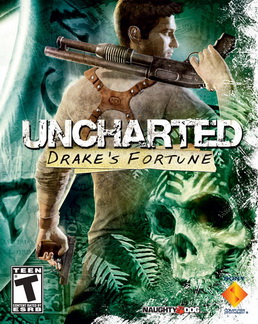Previously in my blog, my discussion toward narrative in gaming been directed towards video games, but this week, I want to explore the direction of narrative in board games. In my experience, the narrative function in board games can be similar to the narrative function in video games. Not too long ago, I played the board game Munchkin for the first time, which if you haven't played it, is a card-based board game where the players create a character and fight monsters in a cute parody of RPG/ traditional dungeon and dragon-esque games. But I think what makes the game so interesting is that it allows the players to come up with their own narrative based on the random character that is created. The cards are a variety of different values, anywhere from equipment and armor to steeds and power-ups, all help form the character that you have throughout the game.
This form of gameplay allows the players to create their characters own stories, it allows for emergent behavior in the game, and fosters interplay between each player.
Traditionally, there has been a narrative arc in which board games were based upon, and though they were loose arcs with room for change and exceptions, most of the games that we are used to playing are usually based around these arcs.
A game design mechanics blogger,
Linnaeus illustrates the game arcs in 2 different functions,
- The opening, middle game. and end game
- Income, Engine Building, Conversion
He explains the first function as:
-opening : "activation and coordination" of pieces and forming of a gameplan
- middle game: active combat or "the main struggle" as Linnaeus says
- end game: game slows, final maneuvers that determine the winner
Linnaeus gives some examples of this game style, but I think one of the best examples he gives is chess.
1) Setup of pieces, forming of strategy (Opening)
2) The gameplay, moving pieces, capturing pieces (middle game)
3) Most pieces are out of commission, winding down to the last available moves ( end game)
And the second as:
Income : beginning resources and start up
Engine Building : Using income to build "victory points"
Conversion: Rapid accumulation of "victory points"
I think, the most familiar game we can associate this arc with is Monopoly
Income: Go space, first cash payout ( income)
Engine Building: Buying properties, earning rent, building houses and hotels (engine building)
Conversion: Buying the most properties, rent accumulation due to multiple rent incomes, hotels and bankruptcy of other players
Though he doesn't that these arcs are a bad thing, he frames them as a generic layout that many other games are made of, where the structure there, and a slightly different narrative laid on top. The end result is always the same and the gameplay to the end is always similar ( as in Monopoly : The player with the most properties/ money wins, doesn't matter the player)
This presents another interesting depth to narrative in games. The more that the players can create their own narrative within the framework correlates to a more desirable game experience.




.JPG)


.JPG)
.JPG)

